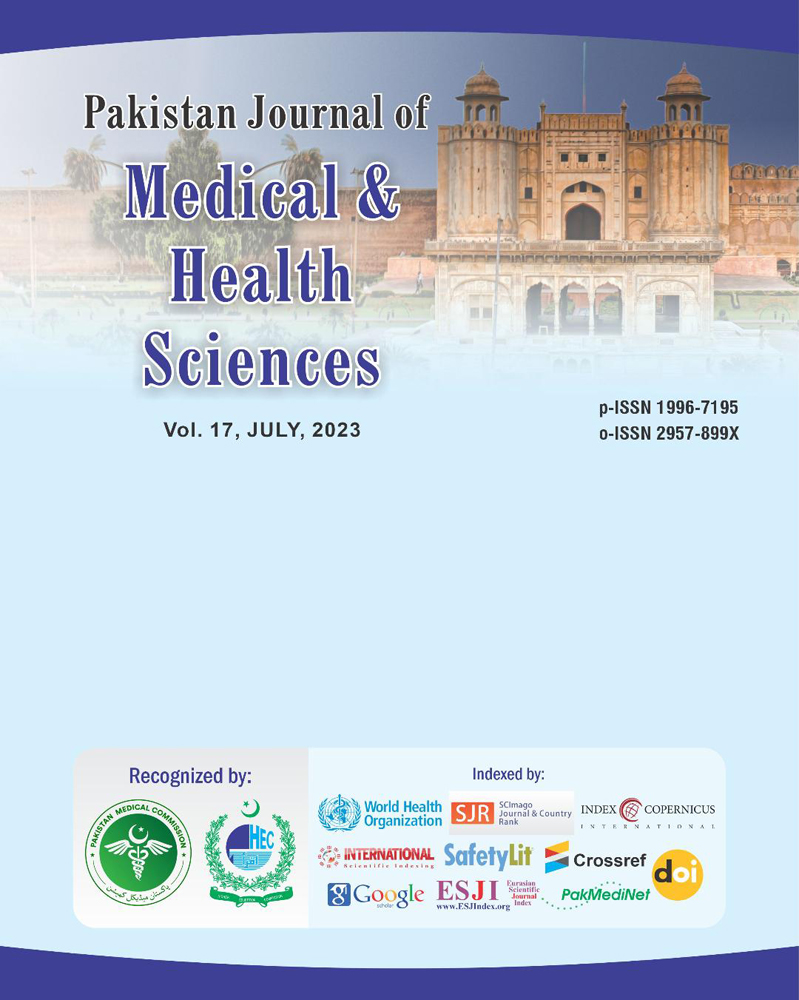Incidence and Predictors of Surgical Site Infections in General Surgery Departments of Public Sector Hospitals
DOI:
https://doi.org/10.53350/pjmhs202317766Abstract
Background: Surgical site infections (SSIs) are among the most common healthcare-associated infections and, in particular, are common in low and middle-income countries. They are with patient morbidity, prolonged hospital stay, and increased antimicrobial resistance. The purpose of this study was to find out the incidence and predictors of SSIs in general surgery patients of the public sector hospitals of Pakistan.
Methods: The study between January 2022 and December 2022 was a prospective observational study carried out at Nawaz Sharif Social Security Teaching Hospital, Lahore, and PIMS Islamabad. A total of 90 patients of both elective and emergency general surgical procedures were enrolled. Demographics, comorbidities, ASA classification, wound class, preoperative stay, biochemical markers (hemoglobin, albumin), and intraoperative variables were collected. CDC criteria were used to diagnose SSIs within 30 days. Independent predictors were identified using logistic regression.
Results: The incidence of SSIs among the 16 patients was 17.8%. Superficial infections (56.2%), deep 25%, and 18.8% organ space. Increased SSI risk was significantly associated with diabetes mellitus (aOR = 3.67; 95% CI: 1.99 – 5.35; p < 0.001). In addition, the classification of dirty wound also independently predicted infection (aOR = 2.55; 95% CI: 1.13–4.98; p = 0.040). Patients who received delayed antibiotic prophylaxis had an increased rate of SSI (37%) compared with those who received timely antibiotic prophylaxis (9.5%). Infected patients had more hypoalbuminemia and anemia, but not independently significant.
Conclusion: SSIs are a common problem in public sector surgical practice. Among key predictors are diabetes and dirty wounds. Taking antibiotics on time, keeping blood sugar under control, and doing aseptic surgical handling are all important to reducing the risks of postoperative infections.
Keywords: Surgical site infection, general surgery, diabetes, wound classification, public hospital, Pakistan
Downloads
How to Cite
Issue
Section
License
Copyright (c) 2023 Tahir Hamid, Khushal Khan, Farhana, Muhammad Ali, Sadia Ayoob,Hajrah Hilal Ahmed

This work is licensed under a Creative Commons Attribution 4.0 International License.


